A MAGAZINE, ALUFEM

JOHN WILLIE and the adventures of the sweet Gwendoline
John Willie (born John Alexander Scott Coutts), born in Singapore in 1902, was the rebel scion of a family of bankers. He lived for long periods in a sort of exile in Australia, where he met Holly, the model who became his wife.
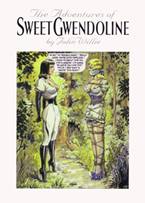
In 1937, while he was in Sydney, he discovered the books illustrated by the French Charles (one of the European forerunners of the kind much loved by Willie) who worked in the Paris of the ’30s. These editions, of little artistic content from the literary point of view, were richly illustrated with whimsical garments and bizarre gimmicks designed to inflict bodily and psychological tortures on the unfortunate protagonists, fallen into the hands of their fanatic tormentors. After the war, Willie, who in the meantime had moved to the United States, founded and sent the magazine Bizzarre alone, which at the time was considered an intolerable scandal for the community. To escape justice, he devised the adoption of mailboxes as the sole reference for communications with his clients, he had to make himself untraceable and was forced to change his address continuously.
The important innovation brought by Willie to the images of bondage was the transition from the fiction of the drawn images (which still continued to produce) to the concreteness of the photographic sequences that portrayed one or more models in situations of “damsell in distress”. Among the most requested were those of the white Gwendoline and the wicked Countess.
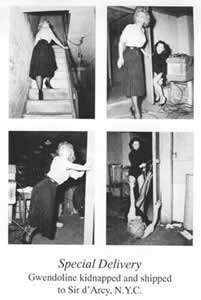
With the passing of the years the fetishistic aspect of clothing diminished (never forgetting the almost maniacal care dedicated to footwear) and the models gradually got dressed in front of the camera, until they reached total nudity for private clients.
Bizarre continued to publish texts and comics, Willie explored the theme of “pony girls” in the illustrations for the stories The Magic Island and From Girl to Pony but did not abandon the theme of “damsell in distress” with the sweet prototype of the virtuous Gwendoline, which the name of John Willie was associated on a universal scale.
In 1946, Bizarre closed temporarily, and also Wink (the periodical pin-up who resumed the publication of the comic entitled Sweet Gwendoline) from 1948 to 1950, suspended its presentation.
In 1950 Willie printed the complete comics, Gwendoline and the Missing Princess, with a luxurious typographic look, which was unfortunately lost. The publication differs from the previous ones both for the technique and for the content: while the first three comics were made by stroke and they propose very chastised images, the fourth was colored with watercolor and showed a series of nudes, in a context where the fetishism bordered on sadism.
In 1952 Irwing Klaw (photographer and publisher known as the artistic “father” of Betty Page) bought the originals from Willie, and published them in black and white after having them censored by the designer Eric Stanton, irreparably defacing them and naming them New Adventures of Sweet Gwendoline .
In 1957 Willie sold the head Bizzarre, and dedicated himself to the publication of the comic book without the purges of Klaw. He decided to print for himself the definitive version of the sweet girl’s first misadventure, and in 1958 published the book Sweet Gwendoline and the Race for the Gold Cup.
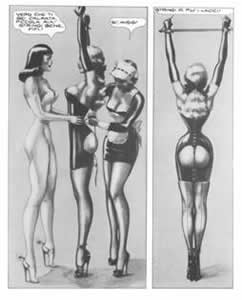
1962 records the death of John Alexander Scott Coutts, and fate decided that in just a few years sexual liberation would legalize what Willie had always had to sell illegally.
Beginning in the 1960s, after Willie’s death, he began producing some unlikely sequels to the adventures of Gwendoline, signed by Gene Bilbrew (Eneg) and Eric Stenton. Over the years, the myth of Gwendoline has revived in many forms, even coming to inspire the film The Perils of Gwendoline in the Land of the Yik-Yak by Just Jaeckin (1983) and the song by the Germans Die Ärzte Sweet, Sweet Gwendoline. In the field of photography, there are many names that have been inspired by the misadventures of the sweet girl, especially Helmut Newton.
The latest production inspired by Gwendoline (published in Italy by the magazine “A” and which will be on show at the Bizzarro Film Festival) is that of a photographer who is very close to us: Hikari Kesho.
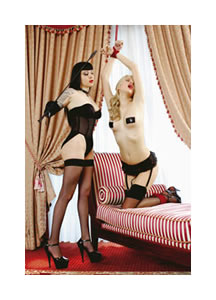

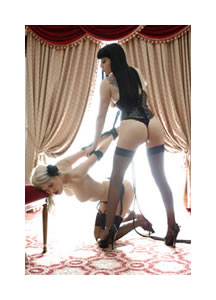
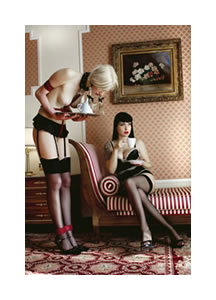
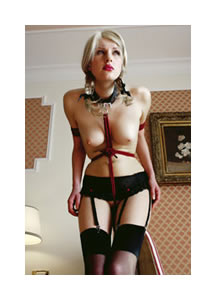
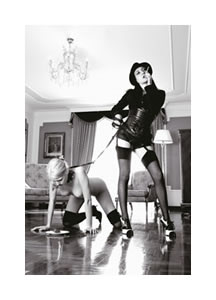

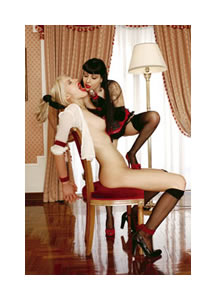
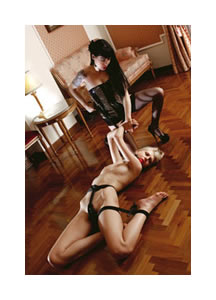
Bibliography:
– The first book of John Willie – Glittering Images
– The second book of John Willie – Glittering Images
 torna a Press review
torna a Press review




Scrivi la tua!
Commenta questo articolo